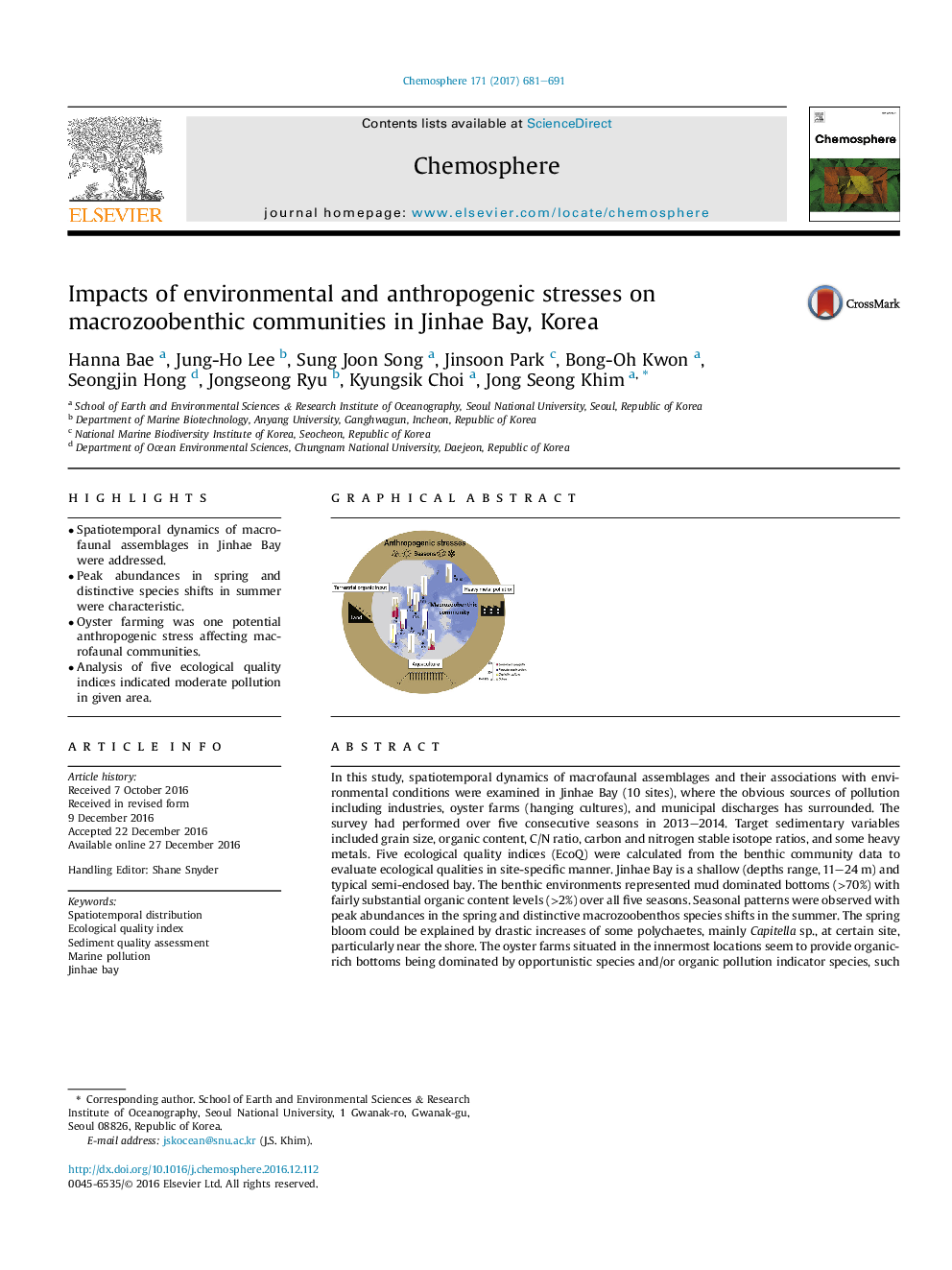| Article ID | Journal | Published Year | Pages | File Type |
|---|---|---|---|---|
| 5746407 | Chemosphere | 2017 | 11 Pages |
â¢Spatiotemporal dynamics of macrofaunal assemblages in Jinhae Bay were addressed.â¢Peak abundances in spring and distinctive species shifts in summer were characteristic.â¢Oyster farming was one potential anthropogenic stress affecting macrofaunal communities.â¢Analysis of five ecological quality indices indicated moderate pollution in given area.
In this study, spatiotemporal dynamics of macrofaunal assemblages and their associations with environmental conditions were examined in Jinhae Bay (10 sites), where the obvious sources of pollution including industries, oyster farms (hanging cultures), and municipal discharges has surrounded. The survey had performed over five consecutive seasons in 2013-2014. Target sedimentary variables included grain size, organic content, C/N ratio, carbon and nitrogen stable isotope ratios, and some heavy metals. Five ecological quality indices (EcoQ) were calculated from the benthic community data to evaluate ecological qualities in site-specific manner. Jinhae Bay is a shallow (depths range, 11-24Â m) and typical semi-enclosed bay. The benthic environments represented mud dominated bottoms (>70%) with fairly substantial organic content levels (>2%) over all five seasons. Seasonal patterns were observed with peak abundances in the spring and distinctive macrozoobenthos species shifts in the summer. The spring bloom could be explained by drastic increases of some polychaetes, mainly Capitella sp., at certain site, particularly near the shore. The oyster farms situated in the innermost locations seem to provide organic-rich bottoms being dominated by opportunistic species and/or organic pollution indicator species, such as Lumbrineris longifolia, Capitella sp., and Paraprionospio patiens. In general, the EcoQ indicators indicated that Jinhae Bay was moderately polluted, with exceptionally poor EcoQ in a few locations during the specific season(s). Overall, adverse effects on benthic community was broadly attributable to contaminations of heavy metals and nearby aquatic farm activities in Jinhae Bay, which requires a prompt action toward ecosystem-based management practice in the given area.
Graphical abstractDownload high-res image (240KB)Download full-size image
